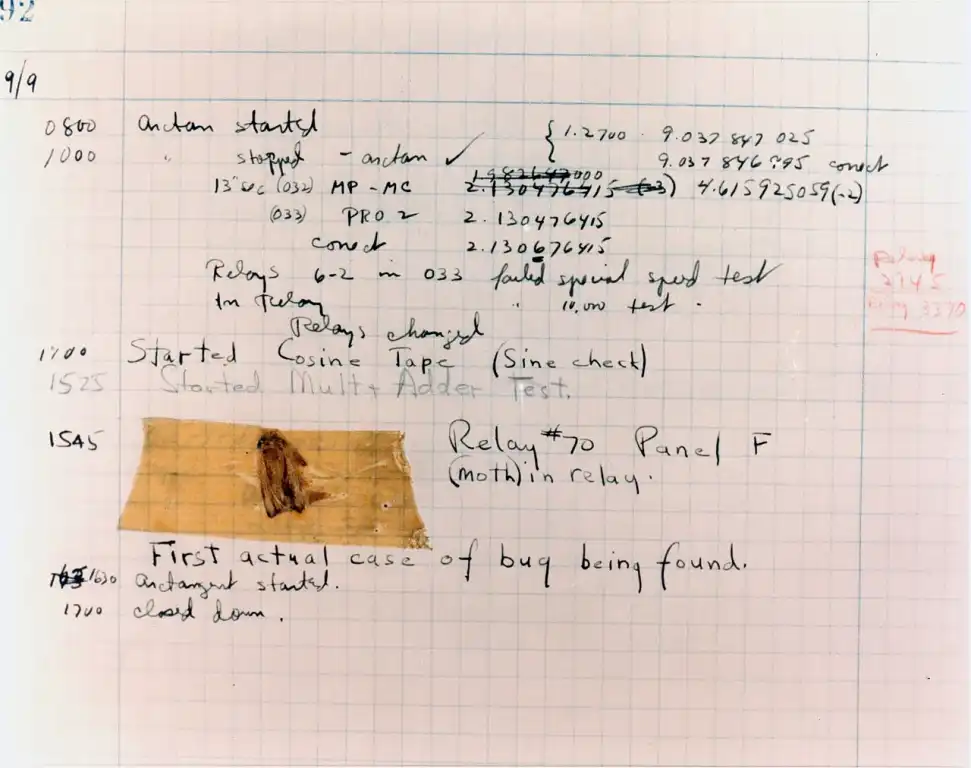
Baby Boomers Born in 1947: Facts, Events, Names, and More
If you were born in 1947, you are a Baby Boomer or Boomer for short. This year continued the baby boom trend started in 1946, after World War II. 1947 falls within the first half of the generation. People born in 1947 grew up during a time of change and growth. The economy was improving, families were expanding, and nations were embracing new ideas. Being part of the early Baby Boomers, those born in 1947 witnessed many firsts in technology, culture, and social progress. This year plays a significant role in defining the characteristics and experiences of the generation.
Demographics of 1947
In 1947, the United States had an estimated population of 143,414,000 people, based on data from the National Center for Health Statistics.[1] That year saw a record number of births, totaling 3,699,940. The birth rate surged by 12.5% compared to the year before. This was a big jump from just seven years before, in 1940, when there were about 1,340,000 fewer births.
Those born in 1947 are now 76 years old. The U.S. Census Bureau reported that 2,083,434 Baby Boomers of 1947 were still alive in 2022.[2] This is slightly more than 56% of the people born in 1947.
| Rank | Male name | Female name |
|---|---|---|
| 1 | James (5.1%) | Linda (5.48%) |
| 2 | Robert (4.93%) | Mary (3.94%) |
| 3 | John (4.75%) | Patricia (2.82%) |
| 4 | William (3.61%) | Barbara (2.68%) |
| 5 | Richard (3.15%) | Sandra (1.91%) |
Famous Baby Boomers Born In 1947
![1947 baby boomer arnold schwarzenegger]()
Arnold Schwarzenegger
Actor, Politician
Austrian-born Arnold Schwarzenegger made a name for himself in Hollywood with roles in movies like "Terminator." He later entered politics and served as the Governor of California from 2003 to 2011. His governance focused on environmental issues, like clean energy.
![1947 baby boomer hillary clinton]()
Hillary Clinton
Politician
Hillary Clinton served as the First Lady of the United States, U.S. Senator, and Secretary of State. She ran for president twice and was the first woman to be nominated by a major party for the highest office.
![1947 baby boomer stephen king]()
Stephen King
Author
Stephen King is a prolific author known for his horror novels. His works have been adapted into movies, TV shows, and have gained worldwide fame.
![1947 baby boomer david bowie]()
David Bowie
Musician, Actor
David Bowie was an influential figure in music and fashion. Known for his eclectic style and persona changes, he had a long and diverse career. His hits include songs like "Space Oddity" and "Heroes."
![1947 baby boomer elton john]()
Elton John
Musician
Elton John is a celebrated musician with a career spanning over five decades. He's won multiple awards, including Grammys and an Academy Award. His music ranges from pop to rock, and he's known for hits like "Rocket Man."
![1947 baby boomer o j simpson]()
O.J. Simpson
Former Football Player, Actor
O.J. Simpson gained fame as a football star and later pursued an acting career. He became widely known for his legal troubles, most notably a high-profile criminal trial in the 1990s. He was acquitted of murder charges yet later faced civil penalties.
Key Events of 1947
Baby Boomers of 1947 came into life during a period of enormous change. Major events of 1947 influenced the generation's views on international relations, faith, and government's role in daily life.
In 1947, U.S. President Harry S. Truman made a historical move in American foreign policy. The U.S. stepped up when Britain said it couldn't support Greece and Turkey anymore. Truman knew these countries were in a tight spot — Greece was grappling with a rising communist-led group, and Turkey was under pressure from the Soviet Union. On March 12, Truman spoke to Congress and called for $400 million in aid to help these nations. This speech marked the birth of the Truman Doctrine.[5] Its goal was to assist countries in resisting pressures like armed minorities or outside influences. The idea got approval from a Republican Congress, setting the stage for the Cold War. Truman's move and the "domino theory," introduced by Dean Acheson, set the tone for U.S. actions in places like Korea, Cuba, and Vietnam for decades to come.
"The seeds of totalitarian regimes are nurtured by misery and want. They spread and grow in the evil soil of poverty and strife. They reach their full growth when the hope of a people for a better life has died. We must keep that hope alive."
Building on the momentum set by the Truman Doctrine, the U.S. took another step to bolster global stability — the Marshall Plan. Officially known as the European Recovery Program, this initiative aimed to revive the economies of European countries and support democracy. Secretary of State George C. Marshall first talked about this idea in a speech at Harvard University in June 1947.[6] The U.S. was concerned that the tough times in post-war Europe could help communism spread. Over four years, about $13 billion was transferred mainly through direct grants. This is around $165 billion in today's dollars. This funding helped the countries involved grow. Industries recovered, boosting trade and national income. The Marshall Plan became a role model for future aid programs, shaping U.S. global outreach for years.
U.S. President Harry S. Truman signed the National Security Act the same year. This law created the National Security Council (NSC), a high-powered team that included the President, Vice President, and key Secretaries.[7] While its role varied under different Presidents, the NSC significantly affected U.S. actions abroad. The act also established the Central Intelligence Agency (CIA) for civilian intelligence gathering and created the Department of Defense by combining the War and Navy Departments. The Air Force broke away as a separate military branch. This act had a deep and lasting impact on how the U.S. thinks about and handles its security.
While the U.S. focused on Europe and internal affairs, another big event happened in South Asia. India and Pakistan gained their independence from British rule. This event is also known as Partition of India.[8] The call for Indian freedom had gotten louder after World War II, as India looked for self-rule in return for its war efforts. Plans for a united India were derailed by disagreement between the Indian National Congress and the Muslim League regarding the structure of the new country. Things heated up with Muslim League leader Muhammad Ali Jinnah pushing for a separate Muslim state, sparking violence and unrest. The British, led by the last Viceroy, Admiral Lord Louis Mountbatten, saw no option but to partition India. Announced in June 1947 and effective by August 15, this division led to mass migrations, ethnic violence, and a refugee crisis involving ten million people.
In the same year, the UN General Assembly approved a plan to split Palestine into two separate states, one for Arabs and another for Jews,[9] with Jerusalem under international control. The idea aimed to end tension between Palestinian and Jewish nationalists. It also set a date for the British, who controlled the area, to leave by August 1948. While Jewish organizations supported the plan, Arab leaders rejected it, arguing it was unfair and broke UN rules. The plan fell apart, leading to violence and eventually war. When the British left in 1948, Jewish leaders declared the creation of Israel, triggering a conflict with Arab states.
Innovations of 1947
In 1947, a team of computer scientists at Harvard University discovered the world's first computer "bug."[10] The bug wasn't a coding error. It was a real moth stuck in the Mark II computer. The moth messed up the computer's electronics, leading to constant errors. Although Thomas Edison had mentioned "bugs" in his work long before, this was the first time a bug was found in a computer. The Harvard team even wrote down "First actual case of bug being found" in their logbook. Today, the term "bug" refers to any flaw affecting a computer's functions, and "debugging" has become a crucial part of the tech world.
Moving from computer bugs to medical breakthroughs, 1947 was an important year in healthcare. Claude Beck published the first paper on open chest defibrillation,[11] a game-changing technique to treat heart attacks. At that time, heart attacks were becoming a major cause of death. The first defibrillator was massive, weighing 120 kg and delivering a shocking 500 volts. Over time, defibrillators became smaller and safer. Baby Boomers born in 1947 benefited from this innovation as they got older.
Another big thing happened in the tech world: the invention of the first working transistor. This took place at Bell Laboratories in New Jersey. William Shockley had the theory but couldn't make it work. That's where John Bardeen and Walter Brattain stepped in, taking care of the engineering.[12] The original version was a "point-contact" transistor, but a better "bipolar" type came later. These new transistors were a big deal. They took up less space and used less power than the old vacuum tubes. Think about your computer or the smartphone you're probably holding right now. These gadgets wouldn't be so compact and efficient without transistors. For the generation born in 1947, this tech would become a big part of their lives as they grew up.
Swinging from tech to kitchen gadgets, the first microwave oven became commercially available in 1947. Percy Spencer, a self-taught guy from Maine, was the genius behind it.[13] The original microwave was different from what we know today. It weighed a massive 300 kg and would cost around $52,000 in today's money. Imagine that! Even before becoming a home kitchen item, it made a public debut in New York City's Grand Central Terminal. A vending machine called the Speedy Weeny served hot dogs cooked in this microwave. For Baby Boomers and later generations, this invention simplified cooking and became a kitchen must-have.
Favorite Movies of the Baby Boomers Born in 1947
If you were born in 1947, the world of cinema had something special for you. The 1950s and 1960s were a big deal for movies. This was the era of cool cars, rock 'n' roll, and some unforgettable films. Color films were becoming more common, and special effects were starting to make their mark. Hollywood was going through a change, and a new wave of talent was hitting the screens. Drive-in theaters gained popularity, providing a unique experience for moviegoers. Let's take a look at some of the favorite movies of Baby Boomers born in 1947.
- "Psycho" (1960) — Directed by Alfred Hitchcock, this film explores the disturbing actions of Norman Bates, a motel owner with deep psychological issues. When Marion Crane, a secretary on the run, checks into Bates Motel, she becomes entangled in a web of mystery and horror.
- "Breakfast at Tiffany's" (1961) — Starring Audrey Hepburn, the film follows Holly Golightly, a young woman in Manhattan with dreams of a better life. As she navigates relationships and grapples with her past, Holly captures the essence of youthful aspiration and vulnerability.
- "To Kill a Mockingbird" (1962) — Set in the Southern United States, this film centers on Atticus Finch, a principled lawyer who defends Tom Robinson, a black man falsely accused of assaulting a white woman. The story also unfolds through the eyes of Finch's young daughter, Scout.
- "The Graduate" (1967) — The film portrays Benjamin Braddock, a recent college graduate struggling with the expectations of adulthood. His life takes a complicated turn when he becomes romantically involved with Mrs. Robinson, only to later fall in love with her daughter, Elaine.
- "2001: A Space Odyssey" (1968) — Directed by Stanley Kubrick, this film explores the consequences of human evolution and technological advancement. When astronauts embark on a space mission to Jupiter, they encounter inexplicable phenomena that challenge their understanding of reality.
- "Easy Rider" (1969) — This movie tells the story of two bikers, Wyatt and Billy, who embark on a road trip across America. As they encounter various subcultures and social issues, the film exposes the cultural divisions of the era.
- "Star Wars" (1977) — In this space epic, young Luke Skywalker joins a rebel alliance to thwart the malevolent plans of the Galactic Empire. The film became a cultural phenomenon and set new standards for special effects in cinema.
- "Rocky" (1976) — Rocky Balboa, a struggling boxer, gets an unexpected chance to fight the heavyweight champion. Despite having the odds stacked against him, Rocky's determination and courage captivate the nation.
- "Jaws" (1975) — Directed by Steven Spielberg, the film focuses on a small coastal town plagued by a great white shark. A local police chief, a marine biologist, and a seasoned fisherman team up to capture the predator.
- "Grease" (1978) — Set in the 1950s, the movie explores the romantic relationship between Danny Zuko and Sandy Olsson, two high school students with contrasting backgrounds. Their love story unfolds against a backdrop of catchy songs and vibrant dance numbers.
Favorite Music of 1947 Baby Boomers
Music played a big role in the lives of Baby Boomers born in 1947. They were teenagers and young adults in the '60s and '70s. These were years filled with musical experiments, new styles, and cultural events like Woodstock. Here are some of the songs that rocked this generation's world.
- "Hey Jude" by The Beatles
- "I Can't Get No (Satisfaction)" by The Rolling Stones
- "Respect" by Aretha Franklin
- "Good Vibrations" by The Beach Boys
- "Blowin' in the Wind" by Bob Dylan
- "Purple Haze" by Jimi Hendrix
- "What's Going On" by Marvin Gaye
- "American Pie" by Don McLean
- "Hotel California" by Eagles
- "Bohemian Rhapsody" by Queen
These songs capture the spirit and mood of the times. Whether it was rock, soul, or folk, the music from this era remains iconic.









